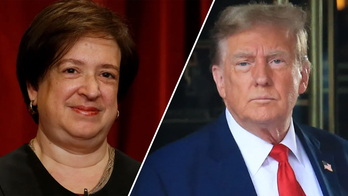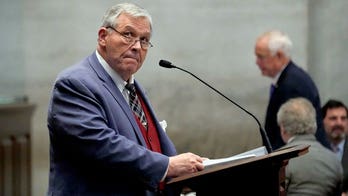Kurtz: Does pressing the flesh still matter?
'Media Buzz' host reacts to Donald Trump's rate of campaigning
As a reporter on the campaign trail, I’ve often enjoyed watching candidates chat people up in diners, hug babies at county fairs and field questions at town halls in a frenetic attempt to connect with voters.
One of the refreshing things about Iowa and New Hampshire, which are notably unrepresentative states, is that their citizens take the presidential vetting process seriously. And there is a certain romance to the idea of candidates pressing the flesh and learning what is on the voters’ minds.
But is retail campaigning now as old-fashioned as a fax machine?
Politico had the nerve yesterday to brand Donald Trump’s campaign “low-energy”—the very label he has indelibly stuck to Jeb Bush. By Politico’s yardstick, in fact, Jeb is the high-energy contender.
The reason? Trump has done 100 campaign events, fewer than any of his top-tier rivals, while Bush has done 172.
By this accounting, Ben Carson with 134 events, Marco Rubio 122 and Chris Christie 120. Ted Cruz has also done 100 events, but often hits five stops a day.
Before we demolish this argument, let’s stipulate that Politico knows exactly what’s going on and wanted to garner some extra clicks with a cheeky headline.
Sure, Trump usually flies in on his luxury jet for an early-evening rally, does his thing and heads back to New York. He doesn’t have to hunt for votes at the Kiwanis club.
But look at the huge crowds he draws: 15,000 in Biloxi, Miss. More than 8,000 in Lowell, Mass.
What’s more, Trump generates more news coverage, sometimes even live coverage, at his rallies than anyone else. So voters in Iowa and New Hampshire see him on television. And one of the main reasons that candidates do these events is to generate local coverage.
My thesis—and Politico allows for the possibility—is that the game has been utterly transformed.
With the debates drawing as many as 24 million viewers, that becomes more important than how many stops your campaign bus makes. With the ability to drive your message on Twitter (which Trump wields as a weapon), as well as Facebook and Instagram and YouTube, candidates are less dependent on a sound bite on Manchester’s WMUR or a few quotes in the Des Moines Register.
What’s more, a candidate who is exhausted from 12-hour days on the trail is less likely to make mistakes fueled by fatigue.
Now I don’t want to minimize the importance of meeting voters face to face. I saw John McCain win the 2000 New Hampshire primary by doing dozens of town halls—small ones with free ice cream giving way to overflow crowds with only the senator as the attraction. Mike Huckabee won Iowa in 2008 and Rick Santorum in 2012 in part by working the state’s 99 counties harder than anyone else.
But every candidate plays to his or her strengths, and Trump’s is the big spectacle. It’s not like the billionaire builder is an obscure ex-governor who has to go around introducing himself to folks.
There is one caveat here, and that is turnout. Journalists are wedded to the model that the ground game, from candidates constantly showing up to a data-driven turnout operation, is crucial to winning state contests. I think that may be a little overblown, but there is a question of how many Trump fans—many of them alienated from the political process—will go to the polls.
The one state where this is a huge deal is Iowa, where voters can’t just swing by when they feel like it. Participating in a caucus means showing up on a cold February evening at a designated time and listen to speeches by their neighbors. So the up-close-and-personal matters in the Hawkeye State. Twelve years ago, Howard Dean’s big lead vaporized in the iciness of caucus night.
If Trump wins Iowa, or finishes a strong second, the old rules go out the window. And no one will be calling him low energy.





